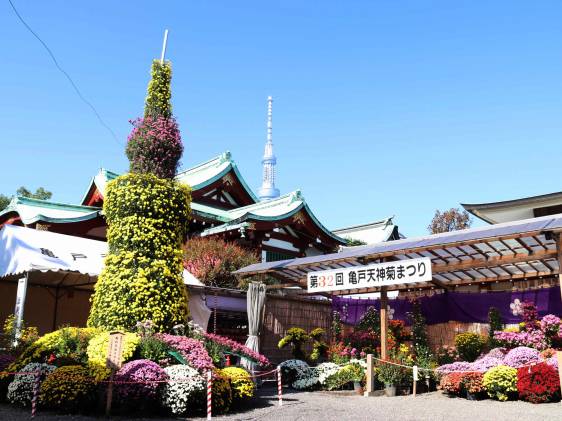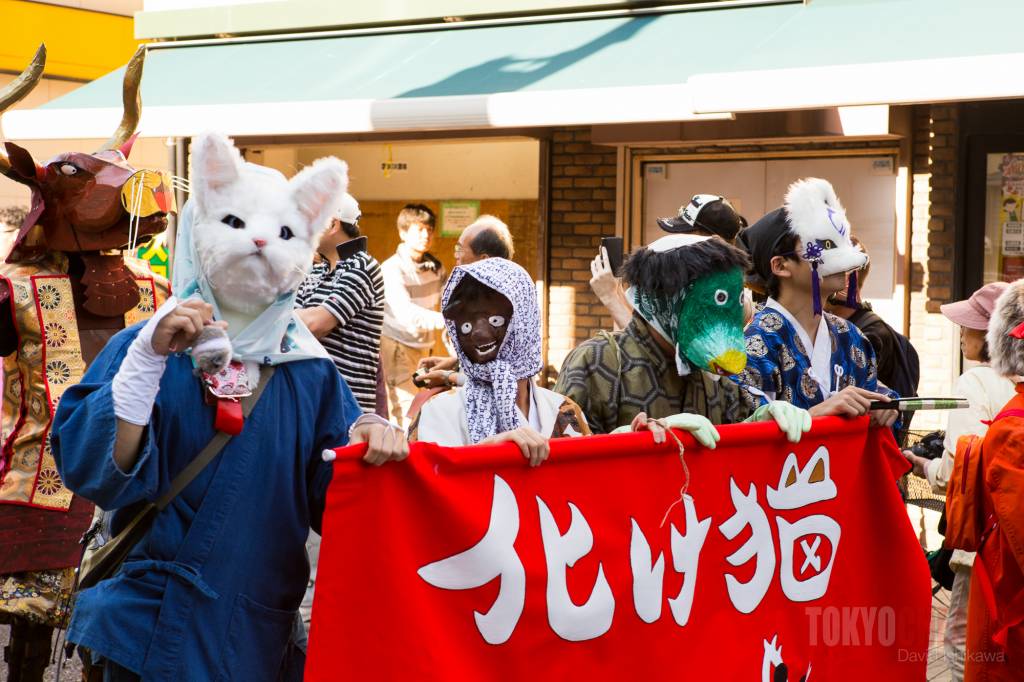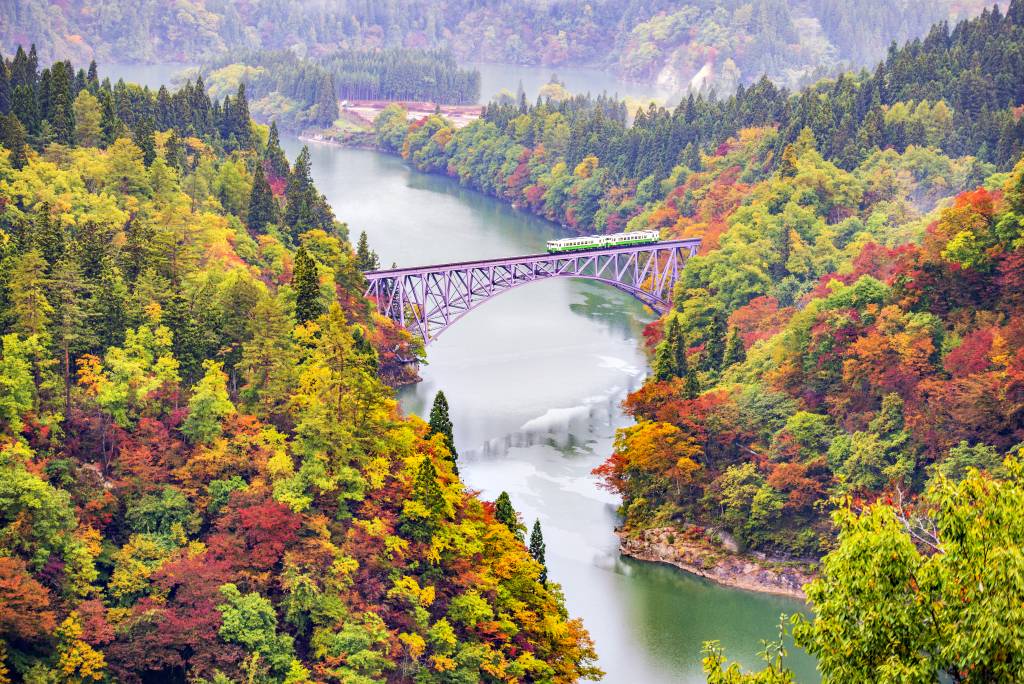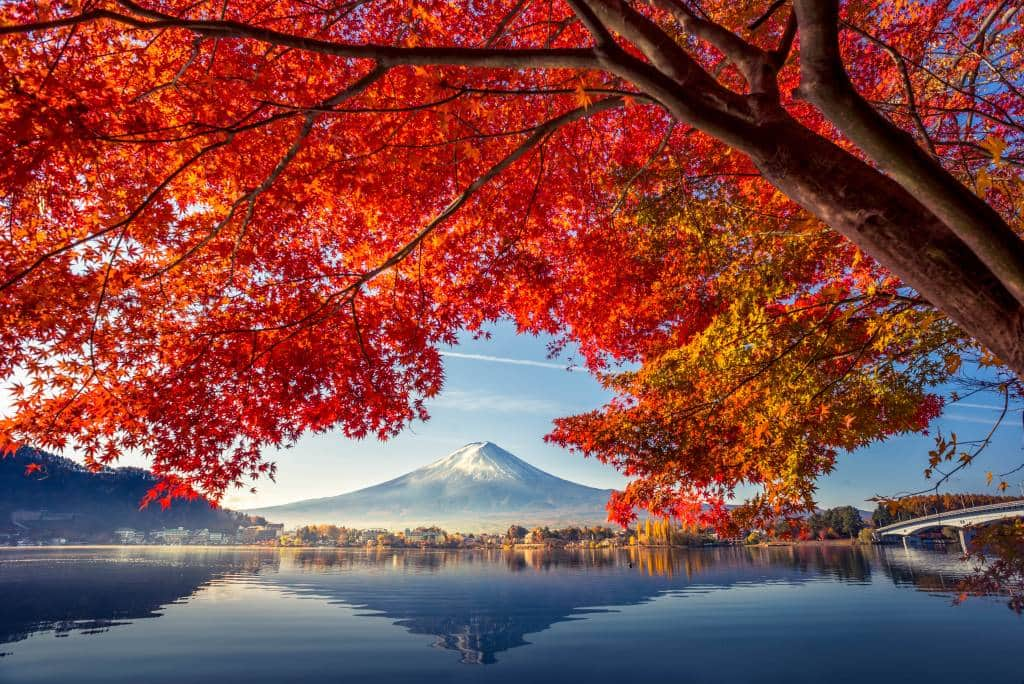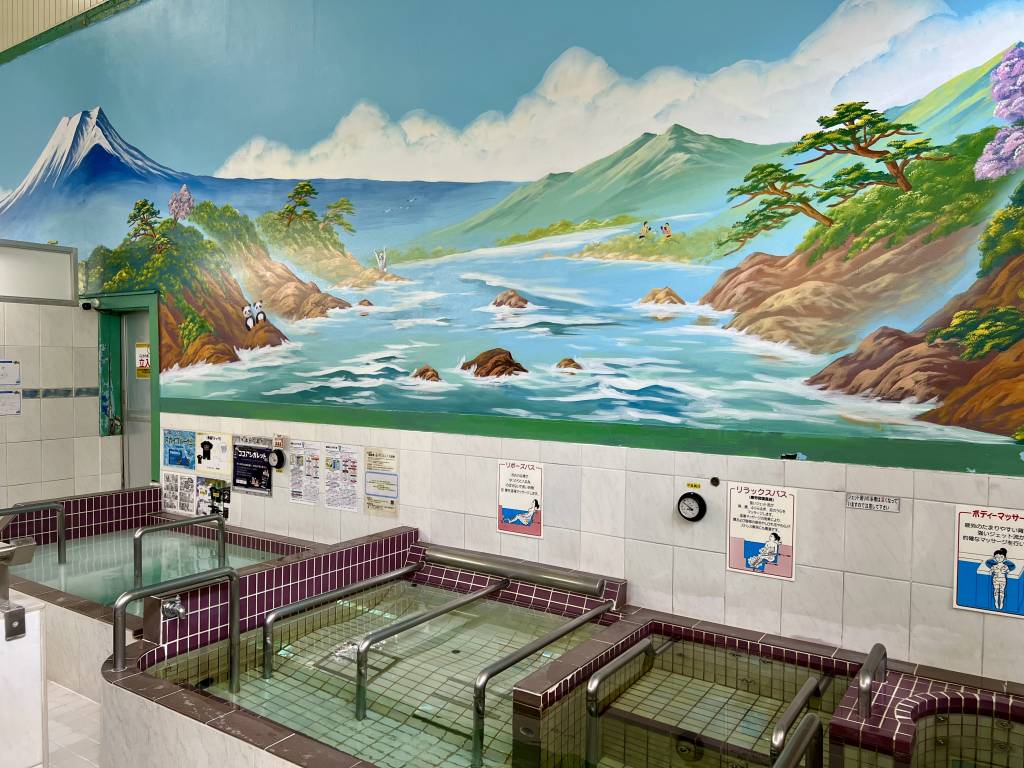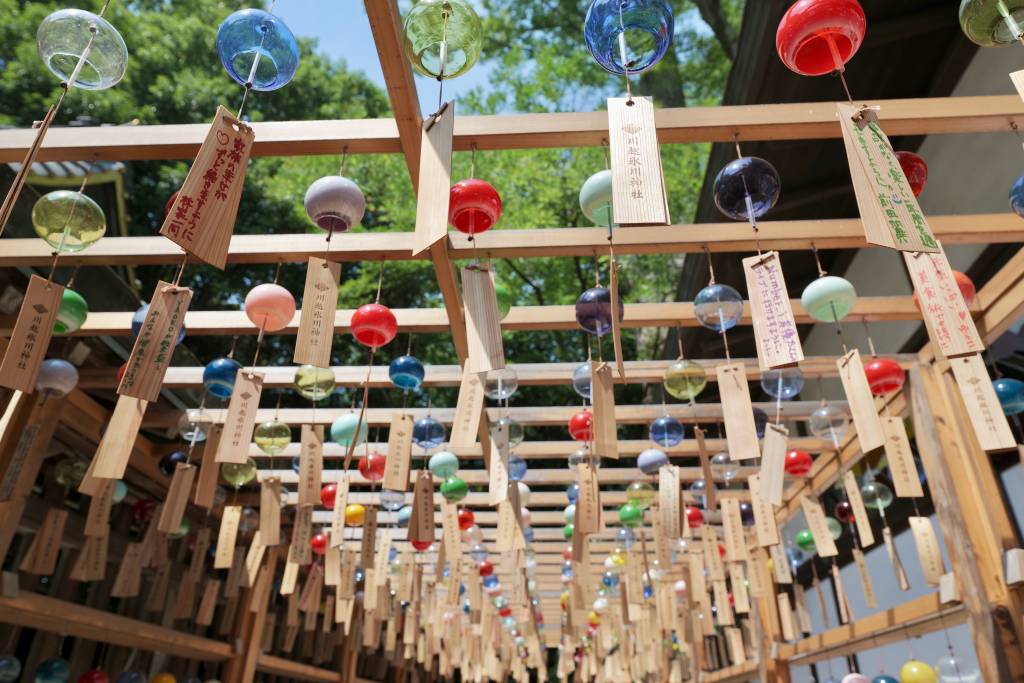19Views 0Comments

Where To See Fall Flowers in Tokyo: Chrysanthemums, Cosmos & More
When people think of fall in Japan, they tend to think of leaves bursting into red and yellow. But there is more to the season than just the trees undressing — there is a wonderful variety of autumn flowers to see in Tokyo and beyond.
Pro tip: Book a bus tour to Ashikaga Flower Park to see some of the best fall flowers.
Japan has a habit of dedicating entire days to flower excursions. Spring flower festivals may be the most famous example thanks to hanami (cherry-blossom viewing). However, there are plenty of flower festivals throughout the year — just look at Hokkaidō’s lavender fields or Ashikaga Flower Park in Ibaraki Prefecture, and you’ll see what we mean.
Tokyo Narita Airport (NRT) To Tokyo Meet and Greet Private Taxi with Lowest Price Guarantee
Save time and hassle by prebooking this private transfer from Tokyo Narita Airport (NRT) to your accommodation in Tokyo.
Autumn, naturally, is no exception.
Japan’s fall flowers
Traditionally, Japan had seven representative autumn flowers — collectively known as aki no nanakusa — which were often depicted in paintings and described in haiku and other literature.
Historically, Japan’s seven fall flowers were:
- Bush clover (hagi)
- Dianthus (nadeshiko)
- Chinese bellflower (kikyō)
- Valerian (ominaeshi)
- Boneset (fujibakama)
- Kudzu (kuzu)
- Japanese pampas grass (susuki, also known as obana)
Apart from a few hagi festivals, you don’t see many celebrations or exhibits for these plants anymore, though you can still find them at many parks.
Instead, when people think of Japan’s fall flowers today, they tend to think of:
- Red spider lilies (higanbana)
- Cosmos (akizakura)
- Kochia (hōkigi)
- Chrysanthemums (kiku)
Where to see fall flowers in Japan
There are festivals throughout the season, some within Tokyo and some requiring a little travel. Some of the more rural locations are easiest to reach via an organized tour, so keep that in mind when planning. If you don’t feel like traveling far, you could simply head to one of Tokyo’s gardens. Most have a great selection of fall flowers.
Red spider lilies
Mid-September to early October
Hidaka (Saitama Prefecture)

Red spider lilies, or higanbana, bloom close to the autumn equinox in late September, so when you see them blooming, you’ll know that autumn is near. These vibrant red flowers are a sight to behold, but they have an ominous meaning in flower language or hanakotoba: they’re associated with loss and death. According to legend, these flowers bloom along paths walked by people you may never meet again.
The name manjushage, used for higanbana in Japan, is said to come from the Lotus Sūtra. The flowers are also commonly found in cemeteries, which is why they are often called the flowers of the underworld.
Sumo Morning Practice Tour at Stable in Tokyo
Try this insider’s experience at a sumo wrestler morning practice session. Enjoy exclusive access to a sumo stable, watching as these massive athletes put themselves through their daily training regimen and go head-to-head.
Kinchakuda Manjushage Park
If you want to see these hauntingly beautiful flowers, head over to Kinchakuda Manjushage Park in Hidaka, Saitama from mid-September to early October. The park is a 15-minute walk from Koma Station on the Seibu-Ikebukuro line, which is about an hour away from Ikebukuro Station.
Sep 19–Oct 5, 2025
| At the door: ¥500 | ||
Cosmos
Mid-September to late October
Tachikawa, Tokyo

Showa Memorial Park
You’re sure to catch these colorful blossoms, which are nicknamed akizakura (autumn cherry blossoms), at Showa Memorial Park until late October.
Sep 6–Oct 26, 2025
| At the door: ¥450 | ||
Kochia
Mid-October
Hitachi Seaside Park, Ibaraki Prefecture

Kochia are fluffy balls of fun from July to November, but they are most sought-after when they turn a brilliant shade of red in mid-October. In the past, people used to dry the plant and use it as a broom — but they soon realized Kochia is far too pretty for that.
Get a Ubigi eSIM for Japan (in advance!)
Access to affordable, high-speed mobile data while in Japan is a must. Ubigi has popular packages in the 10GB–25GB range, as well as unlimited data plans for power users. TIP: Use code TOKYOCHEAPO for 10% off.
Fun fact: the plant also produces nuts, which are a specialty in Akita Prefecture.
Hitachi Seaside Park
Miharashi Hill in Ibaraki Prefecture’s Hitachi Seaside Park is famous for being covered in fiery red Kochia throughout October. The park is about two hours away from Tokyo. You can book a bus tour, if you don’t feel like dealing with trains and buses.
Autumn roses
Early October to early November
Various spots in Tokyo

While it’s a common flower, if you like roses, you’ll be pleased to know that some parks and gardens in Tokyo — Kyū-Furukawa Teien Garden in Komagome, Hibiya Park, and Jindai Botanical Gardens in Chōfu, among others — have autumn rose festivals for certain types that bloom in October.
Kyū-Furukawa Gardens
This flower show is a yearly highlight at Kyū-Furukawa Gardens. Not only are there beautiful roses, but there is also a concert, a scent tour, and a shop selling bloomin’ good items.
Oct 11–Nov 7, 2025
| At the door: ¥150 | ||
| At the door: ¥70 | ||
Chrysanthemums
Late October to late November
Various spots in Tokyo

Next up are chrysanthemums — arguably the flower that gets associated with autumn the most. Even though it’s never been one of the aki no nanakusa, it’s been long-cherished in Japan, so it might as well be considered the representative flower for autumn.
Aside from the cherry blossom, the chrysanthemum (kiku in Japanese) is considered to be Japan’s national flower, since it is associated with the Imperial Family. Not only does it appear on the Imperial Seal of Japan, but the monarchy is also referred to as the Chrysanthemum Throne. Many family crests have also featured this flower, which is a symbol of longevity. You can see it on the 50-yen coin, too.
Because of the chrysanthemum’s significance, there are several flower festivals dedicated to it. In most cases, they not only display the flowers, but also sell seeds and young chrysanthemums that you can grow on your own.
Jindai Botanical Gardens
Head to Jindai Botanical Gardens for their yearly Chrysanthemum Exhibition. The park is accessible from the Jindai Shokubutsu-kōen-mae Stop of the Keio Bus bound for Shindai-ji Temple. Board the bus from Tsutsujigaoka Station on the Keiō Line. Another option is to walk about 20 minutes from Chōfu Station.
| At the door: ¥500 | ||
| At the door: ¥200 | ||
| At the door: ¥250 | ||
Takahata-fudoson Temple
Held at Takahata-fudoson Kongo-ji, this is one of the Tama area’s biggest chrysanthemum festivals. There is a plant sale, as well as displays, judging of the competitive entries, and workshops, too. The temple is a 5-minute walk from Takahatafudo Station on the Keiō Line or Tama Monorail.
Oct 26–Nov 17, 2025
Free
Kameido Tenjin Shrine
Well known for its wisteria festival in spring, Kameido’s signature shrine also has chrysanthemums to enjoy in autumn. This festival is a 15-minute walk from Kameido Station. You can pair a visit with a twirl around the historical Asakusa area.
Free
Shinjuku Gyoen Garden (Editor’s top pick)
Held annually since 1929, the Shinjuku Gyoen exhibition includes specially planted flowerbeds as well as temporary arrangements. The garden has been growing chrysanthemums since 1904 and although there’s a small fee to get in, it’s well worth it. See what else there is to do in Shinjuku.
Nov 1–Nov 15, 2025
| At the door: ¥500 | ||
| At the door: ¥250 | ||
Hibiya Park
This flower festival is a 2-minute walk from Hibiya or Kasumigaseki stations. It’s practically a tradition now, as it’s been held since 1914 and has displays of over 2,000 flowers. There are also seedlings sold and seminars about growth techniques.
Free
Yushima Tenmangū Shrine
From 6 a.m. til dusk, this event at Yushima Tenmangū has dolls with clothes made of chrysanthemums on display, in addition to over 2,000 chrysanthemums. It’s a 2-minute walk from Yushima Station.
Get our Tokyo Cheapo Hacks direct to your inbox
-
 Tokyo’s Best Apartment-Style Hotels, by Area
Tokyo’s Best Apartment-Style Hotels, by Area -
 Highway to Hot Springs: Tokyo to Kusatsu Onsen by Bus
Highway to Hot Springs: Tokyo to Kusatsu Onsen by Bus -
 The Best Pocket Wi-Fi for Visiting Japan — Compared
The Best Pocket Wi-Fi for Visiting Japan — Compared -
 Go-Karting in Tokyo: Everything You Need To Know
Go-Karting in Tokyo: Everything You Need To Know -
 Morning Sumo Practice in Tokyo—Everything You Need To Know
Morning Sumo Practice in Tokyo—Everything You Need To Know -
 First-Time Harajuku Itinerary: Fashion, Street Food, and More
First-Time Harajuku Itinerary: Fashion, Street Food, and More







